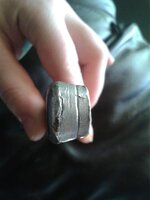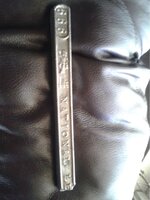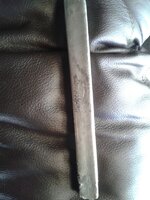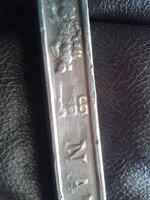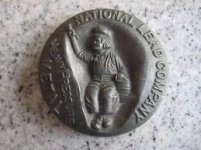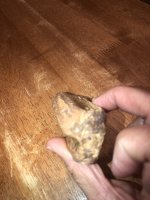WKB
Tenderfoot
- Jun 7, 2012
- 6
- 1
Found This bar or idk what in a old barn my grandparents use to own. I've taken it too 2 different jewelers they ran silver test. It didn't turn a milky white like silver does or green like stuff thats not silver does. It just sort of liquified. Both told me to take it to a refinery cause it's possibly platinum.
